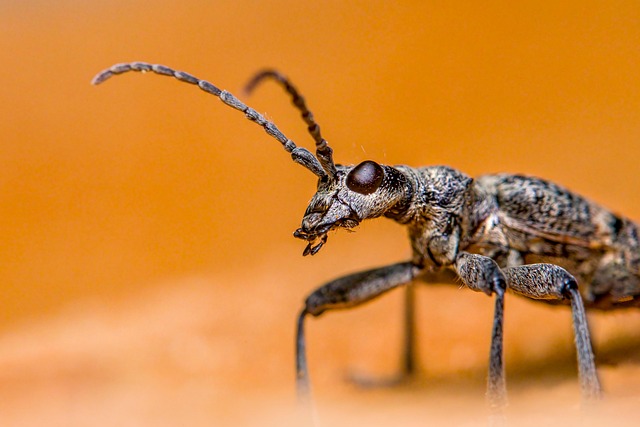Bed bugs, silent invaders, hide in cracks, bedding, and furniture. Early signs include bites and sheddings. Preventative measures involve regular cleaning and tidiness. Traditional methods like insecticides struggle with eradication; modern techniques offer faster, safer solutions. Heat/cold treatment, IGRs, and IPM ensure bug-free homes, safe for families and pets. Post-eradication care includes deep cleaning, monitoring, sealing gaps, and regular inspection to prevent reinfestation. For effective ant infestation removal, these strategies create an unwelcoming environment for bed bugs.
Tired of sleepless nights due to bed bug bites? Advanced bed bug eradication methods offer a respite. This comprehensive guide explores effective strategies to rid your home of these persistent pests, from understanding infestations and prevention to cutting-edge treatment options. Discover the science behind modern solutions, ensuring a restful night’s sleep once more. Learn best practices for post-eradication care, maintaining a bug-free haven with proper maintenance techniques—the key to keeping ants and other intruders at bay.
Understanding Bed Bug Infestations: Signs and Prevention Strategies
Bed bugs are elusive pests that can infiltrate homes through various means, making their eradication a challenging task. Understanding how they infest and the signs of an existing problem is the first step toward achieving a restful home environment free from these intruders. Bed bug infestations often go unnoticed in the early stages, as these insects are nocturnal and tend to hide during the day. They leave behind subtle clues, however, such as small red bites on the skin, which may appear in straight lines or clusters. If you suspect an ant infestation removal issue, it’s crucial to inspect your bedding, furniture, and cracks in walls or floors for any signs of bed bugs or their sheddings. Regular cleaning and maintaining a tidy home are effective prevention strategies, as these measures limit hiding places and reduce the risk of an infestation.
Traditional vs Advanced Eradication Techniques
In the battle against bed bugs, traditional methods have long been the go-to solution for many homeowners. These techniques often involve extensive cleaning, sealing off affected areas, and using powerful insecticides to kill the pests. While effective, these traditional methods can be time-consuming, require significant effort, and may not always guarantee complete eradication.
Advanced bed bug eradication techniques have emerged as game-changers in the industry. Utilizing innovative technologies like heat treatment, cold temperature killing, and advanced monitoring systems, these modern approaches offer faster, more precise, and safer solutions. For instance, heat treatments use controlled temperatures to kill bed bugs and their eggs, while cold treatment methods employ freezing temperatures to achieve similar results. These advanced techniques not only ensure a deeper level of cleanliness but also reduce the risk of chemical exposure, making them ideal for homes with families or pets. Additionally, real-time monitoring systems help identify active infestations early on, preventing reoccurrence, and providing peace of mind for homeowners, effectively addressing ant infestation removal concerns.
The Science Behind Modern Bed Bug Control Solutions
The science behind modern bed bug control solutions has evolved significantly, transforming the way we address these persistent pests. Traditional methods often relied on harsh chemicals, but today’s approach is more nuanced and targeted. Advanced technologies such as heat treatment, cold therapy, and specialized insect growth regulators (IGRs) are now used to eradicate bed bugs effectively while minimizing environmental impact. These modern solutions not only target adult bugs but also their eggs and nymphs, disrupting the entire life cycle of the infestation.
Furthermore, understanding the behavior and biology of bed bugs has led to innovative strategies. Professionals now employ a combination of tactics, including strategic application of residual pesticides, non-chemical treatments like diatomaceous earth and neem oil, and even the introduction of natural predators. This integrated pest management (IPM) approach ensures that ant infestation removal is thorough, safe for residents, and eco-friendly. By leveraging scientific advancements, homeowners can achieve a restful home free from bed bugs.
Restoring Your Restful Home: Post-Eradication Care and Maintenance
After successfully eradicating bed bugs, restoring your home to a peaceful sanctuary requires careful post-eradication care and maintenance. The first step is to thoroughly clean all affected areas using hot water and strong detergents to eliminate any remaining eggs or traces of the pests. Vacuuming floors, furniture, and cracks is crucial to removing shed skins, fecal matter, and any residual debris.
Regular inspection and monitoring are essential to prevent reinfestation. Check for any signs of new bed bug activity, such as bites or small blood spots on bedding. Addressing any new infestations promptly with ant infestation removal methods like heat treatments or specialized insecticides can help maintain a pest-free environment. Additionally, sealing gaps around windows and doors, repairing torn screens, and ensuring proper ventilation can create a less inviting habitat for bed bugs, reinforcing your efforts to keep them at bay.
In conclusion, advanced bed bug eradication methods offer a more effective and restful solution for homeowners facing infestations. By understanding the science behind modern control solutions and implementing post-eradication care, you can ensure a comfortable and pest-free environment. Remember that proactive prevention strategies and swift action are key to avoiding these persistent pests, making your home a peaceful sanctuary once again.
